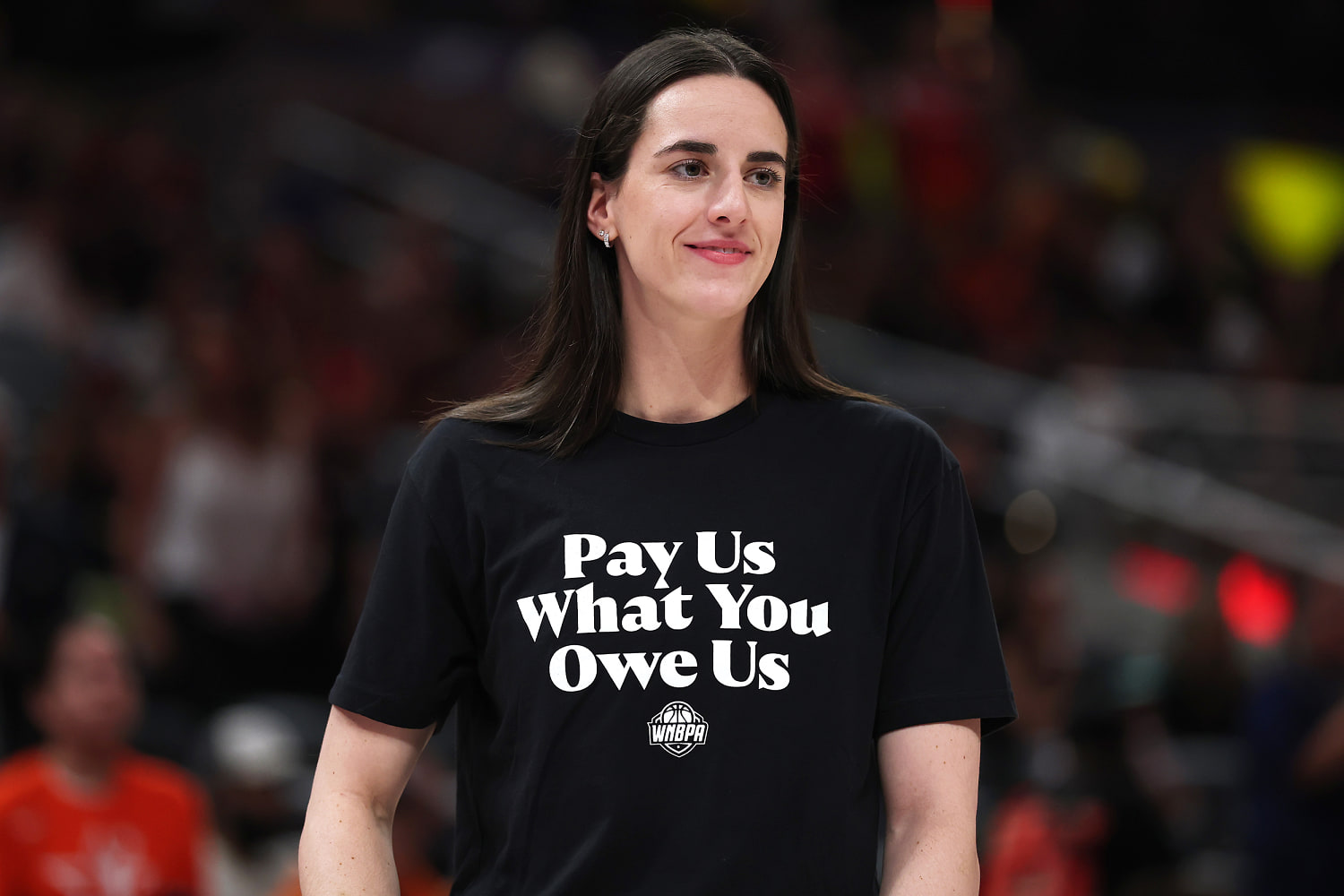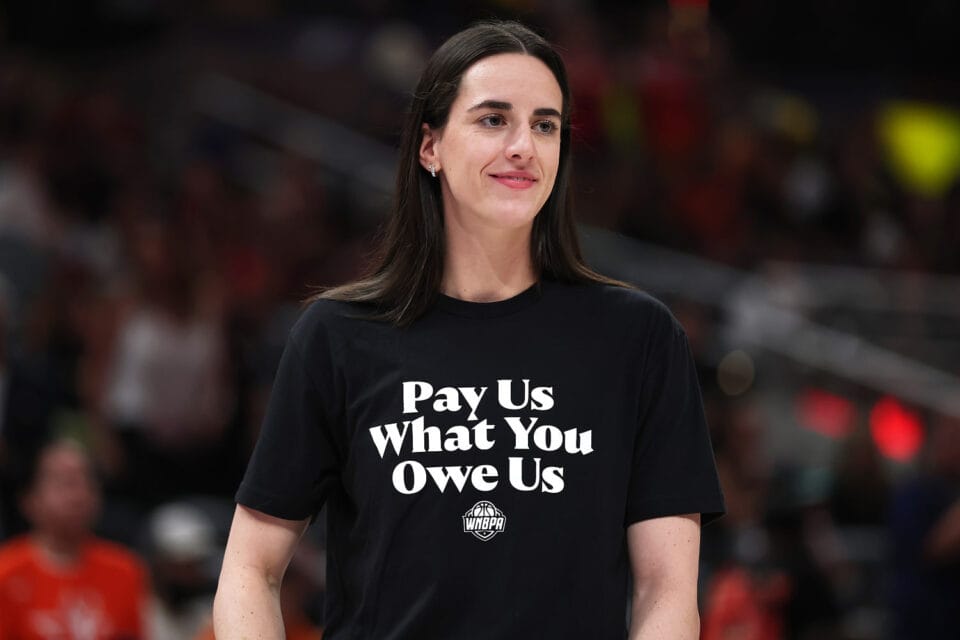
When the WNBA’s biggest stars took the court for the league’s All-Star game in Indianapolis on Saturday night, every player on the floor wore a black T-shirt adorned with white lettering sharing a simple message:
“Pay Us What You Owe Us.”
After a weekend of celebration for a league that continues to rise in popularity, the players’ message was a reminder that they are still looking for a stronger financial foothold in a league that falls far behind its contemporaries in regard to how the athletes are paid.
Since the last collective bargaining agreement between the WNBA and the players’ association was signed in 2020, the economics of the league have shifted rapidly.
From 2019 to 2023, the WNBA’s revenue increased from $102 million to $119 million, according to Bloomberg. That was before Caitlin Clark’s rookie season in 2024, which aided one of the most important years in league history. With Clark in tow, the WNBA set records for merchandise sales last year, and also had its most-watched regular season in 24 years.
So far this season, the league’s average attendance is the highest it has ever been, according to Across the Timeline.
The WNBA has responded to the explosion with expansion. The league will increase to 18 teams by 2030, adding franchises in Portland, Toronto, Cleveland, Detroit and Philadelphia over the next five years. (The Golden State Valkyries became the W’s 13th team this season.)
The Cleveland, Detroit and Philadelphia ownership groups will also pay a $250 million expansion fee — a substantial increase over the $50 million the Valkyries paid in 2023.
On top of all that, the WNBA also signed a new television rights deal last summer that will reportedly pay the league $2.2 billion over the next 11 years, an average of $200 million a season. (NBC News’ parent company, NBCUniversal, is one of the rights’ holders under the new deal.)
The biggest issue for the players, then, is how to capitalize on the increase in interest around the game with a new economic model. The WNBPA opted out of the CBA agreement last year, and the deal will expire on Oct. 31 unless a new agreement is reached.
Currently, WNBA players receive only 9.3% of league revenue, according to MarketWatch, less than one-fifth the share of most other professional leagues. Players can earn a higher share, but only if certain cumulative revenue targets are reached.
In the NBA, players receive 49% to 51% of basketball-related income. In the NFL, players are guaranteed at least 48.8% of revenue in a 17-game season. NHL players receive 50% of hockey-related income. (MLB players do participate in a revenue-share system.)
The average salary in the WNBA this season is only a little over $102,000. The entire value of Clark’s four-year rookie contract is less than $340,000. She is being paid only $78,066 this year.
“It’s time for WNBA players to get a higher percentage of the league’s basketball-related income,” Chiney Ogwumike, who last played for the Los Angeles Sparks in 2023, wrote in The Players Tribune in May 2024.
The league and union met Thursday in advance of the All-Star festivities, though players expressed frustration with the discussions.
In addition to salaries, another one of the key issues for the union will be prioritization, or how committed players are expected to be to their WNBA teams. Many players participate in different leagues outside of the WNBA season to supplement their salaries — such as the player-founded Unrivaled league. WNBA owners are lobbying for stricter commitments from players to put the W first, while players hope to maintain flexibility.
“[The] meeting was good for the fact that we could be in the same room as the league and the Board of Governors and that type of thing,” said Breanna Stewart, New York Liberty forward and union vice president, on Friday. “But I think, to be frank, it was a wasted opportunity,” she noted.
“We could have really kind of gotten into a deeper dive of everything. Based on their most recent proposal, we just aren’t able to get to a place where we’re actually even talking about the same thing,” Stewart added.
Ultimately, while there will be several details for the league and the players to hammer out between now and the end of October, expect money to be the biggest sticking point.
“Rev sharing is truly transformational,” Los Angeles Sparks guard Kelsey Plum said. “We want a piece of the entire pie. Not a piece of part of the pie. We’re a resilient group. We know the unity it takes to be able to [get] the outcome desired.”
